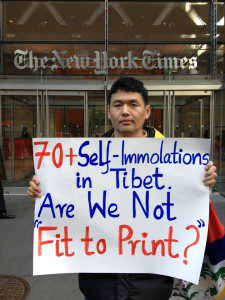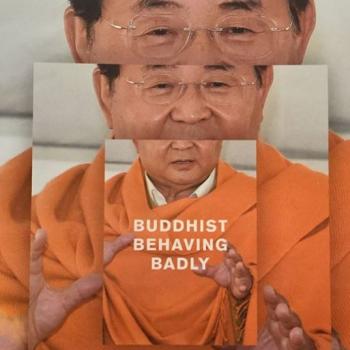
The news regarding Tibetan self-immolations speaks for itself:
British Buddhist monk self-immolates at French monastery (Nov 16)
Tibetan boy, 14, dies in self-immolation (Nov 15)
2 Tibetans Dead After Self-Immolation Protests (Nov 15)
Slowly but surely these deaths are making their way into the mainstream media. But these aren’t the fifth or sixth or even tenth or eleventh cases of self-immolation. According to writer and activist Joshua Eaton, there have been 74 self-immolations inside Tibet alone since 2009 (names, dates, etc here).
China’s response? Massive surveillance and guards with fire extinguishers.
Everyone else’s response: mostly nothing.
What can you do?
The long answer is to educate yourself. While we’ve seen rapid (though often very unstable) political change recently in several countries affected by the Arab Spring, it’s unlikely that anything major will change in Tibet any time soon. Even if there is a major spike in protests, I don’t see any major changes in Tibet. Call me pessimistic, but this was my call in October 2007 for Burma and it turned out to be correct. Internally, I don’t think too much can be done. In fact, the most powerful thing that Tibetans can do, is to raise awareness outside of China-occupied Tibet.
And it is just this realization, I believe, that is driving so many to take their own lives in this manner – or, as they may understand it, to offer their own lives. In Buddhism, as in most religions, suicide is thought of as a grave offense and to take a ‘precious human life’ – including your own – results in an extraordinary amount of bad karma, that is, one will be reborn in hell (yes Buddhists have hells – 18 of them). But, also like most religions, there can be a certain understanding of the sacrifice as a selfless act, motivated not out of self-hatred or a desire to die but out of deep compassion for others.
If you are in the US, contact your congressperson. Avaaz has a petition you can sign here with over 1 million signatures and counting.
Get involved now however you can. Even if you start in a very passive role, simply ‘liking’ a pro-Tibet page on facebook, this will start something. It’s like Shantideva’s advice on generosity – start with carrots and potatoes (see below). If you care to give/do more, do. Share this post. Share the news stories linked above or the organizations below. Nudge your friends. While I am (I think rightly) pessimistic about internal changes in Tibet, I am optimistic about society in general.
Visit the Students for a Free Tibet here:
https://www.studentsforafreetibet.org/
or on facebook here:
https://www.facebook.com/StudentsforaFreeTibet
SFT in the UK:
And the blog for SFT in India:
http://lhasarising.wordpress.com/
And if all of this is a bit too depressing, keep in mind that through it all, most Tibetans have maintained a wonderful sense of humor about life and the willingness to get the word out, even if it requires… unconventional (though certainly ‘skillful’) means:
On the first level, a Bodhisattva just develops their giving to perfection, to ultimate
giving. And there are beautiful stories about the Buddha, before he was a buddha, he
was a bodhisattva already with the wish for enlightenment in his heart. There are
beautiful stories how he meets the hungry tigress and he gives his body to her, and
other such beautiful stories in the Jataka Tales.
Sometimes we get a little bit scared off by those stories: “If I give my body, then
how… what?” so Master Shantideva in his Guide to the Bodhisattva Way of Life – a
very famous buddhist text – he says: don’t worry. You begin with carrots and
potatoes. You give them carrots and potatoes, you develop your giving, the day will
come when for you to give your arm or your leg will be same as giving a carrot or
potato. No problem, no problem. And there are such stories, too. (from here.pdf)











